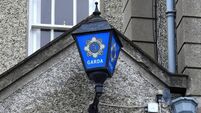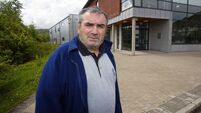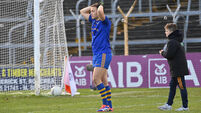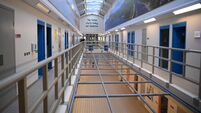The parts of the puzzle that led to guilty verdict
There was no direct evidence or forensic evidence to link O’Reilly to his wife’s death as there were no eye-witnesses to the killing and results from tests on his clothing provided no clues to suggest he was responsible for her murder.
As trial judge, Mr Justice Barry White, remarked at one stage, a piece of circumstantial evidence might prove of little value on its own. However, such a piece of evidence when taken in conjunction with other circumstantial evidence allows a jury to consider “if it fits in the jigsaw puzzle”.
The following are the main pieces of circumstantial evidence which when taken together would have led the jury to finding O’Reilly guilty of his wife’s murder.
Mobile phone records undermined O’Reilly’s alibi as they showed his handset had travelled on a journey out of the city close to the murder scene and back to Dublin again during the period he claimed he was at Broadstone bus depot.
CCTV footage captured at two locations in north Dublin showed images of a car resembling O’Reilly’s Fiat Marea estate on a journey towards his home in The Naul on the morning of the murder. The timings of such sightings were consistent with the mobile phone records.
The failure of CCTV to record O’Reilly entering Broadstone bus depot, even though it had captured images of his colleague, Derek Quearney, also played a part.
O’Reilly’s key alibi witness, Mr Quearney, accepted he could be wrong about the time he said he was with O’Reilly at Broadstone. Gardaí claimed there was a 30-40 minute discrepancy between Mr Quearney’s timing and the evidence of phone records.
No witnesses apart from Mr Quearney came forward to say that they saw O’Reilly at Broadstone.
O’Reilly was having a serious sexual relationship with a former work colleague, Nikki Pelley, at the time of Rachel’s murder despite initially denying having an affair to gardaí.
O’Reilly revealed his revulsion for his wife in a series of bitterly worded emails to his sister, Ann, four months before Rachel’s death in which he described her as a “c**t”.
In the same emails in June 2004, O’Reilly remarked, in the context of a potential custody battle for the couple’s two sons should their marriage break up, that he would “lose if I don’t try different angles”.
O’Reilly had placed a note in his wife’s coffin which, when exhumed, read: “This is the hardest letter I’ve ever had to write, for reasons only we know. Rachel, please forgive me. Two words, one sentence, but I will say them forever.”
O’Reilly told a woman on the day of Rachel’s murder that no sexual assault had taken place on his wife’s body, even though the post mortem did not take place until the following day. Gardaí maintain that only her killer could have been certain of such a fact.
O’Reilly told Jackie Connolly, a close friend of Rachel’s, that he was afraid of being framed for the murder as there were “a few hours” when he didn’t have an alibi.
Another witness, Fiona Slevin, claimed O’Reilly questioned why garda were searching fields for the murder weapon when it was in the water on the day of Rachel’s funeral.
A receptionist at Viacom remarked how O’Reilly had puffy eyes as though he’d been crying after returning to his office on the day of the murder.
A bad effort was made to make the murder looked like a botched burglary. However, over €1,300 in cash was left untouched during the “burglary”.
O’Reilly expressed remorse to friends that he had instructed his wife not to go to gym as normal but to stay at home on the day of her murder.
Evidence was given that O’Reilly questioned friends about the quality of CCTV footage at Murphy’s Quarry near his home a month after Rachel’s death.
The prosecution argued that the lack of blood around the O’Reilly home could only be explained by Rachel’s killer having taken a shower.
In a statement made to gardaí on October 6, 2004, O’Reilly described in detail the route he had taken from his home that morning to his gym before arriving at his offices in the Bluebell Industrial Estate. He provided a similar description about his journey from Broadstone back to Viacom’s offices later that day. In contrast, he provided no detail about the route he took from Viacom to Broadstone, which the prosecution suggested was because he had travelled back home to murder his wife instead.
O’Reilly was able to provide gardaí with details of the calls and text he received while travelling back home on the afternoon of October 4, 2006 after being alerted that there was possibly something wrong with Rachel. The prosecution argued that “a panicked husband” would not be able to have such good memory.
Lawyers for the DPP questioned why O’Reilly would send an affectionate text message to Rachel on the morning of her death given the negative feelings expressed for his wife in e-mails sent to his sister.
O’Reilly stood to gain a significant sum of money from an insurance policy on his wife’s death.












